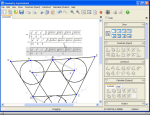Geometry Expressions
 | |
|
Geometry Expressions | |
| Developer(s) | Saltire Software Inc |
|---|---|
| Stable release | 3.0 SP2 / June 2012[1] |
| Operating system | Windows, Macintosh and Linux |
| Type | interactive geometry software |
| License | Proprietary |
| Website | Official Website, Math-Sharing Website |
Geometry Expressions is an Interactive Symbolic Geometry System.
Geometry Expressions draws figures that can be defined by either Symbolic Constraints or numeric locations. Calculations can be made from these constraints and are presented numerically and also symbolically as mathematical expressions.[2] All of the usual constructions are available, along with powerful new symbolic constraints.
Geometry Expressions can be used as a stand-alone program or in conjunction with your favorite (computer) algebra system (CAS) via MathML input and output. Expressions and Calculations can also be copied and pasted into the following CAS systems: Derive, Maple, Mathematica,[3] Maxima, MuPAD, or Ti-Nspire. This allows for convenient incorporation of Geometry Expressions into other math-related projects.[4]
A website (Euclid's Muse) has also been created for Geometry Expressions users to share projects in the form of interactive HTML5 apps.[5]
Features
Note: this is based on information from the website as well as looking in the actual program.[6]
Drawing Shapes
You can draw and constrain the following objects by using the icons in the Draw tool panel:
- Points
- Line Segments
- Infinite Lines
- Vectors
- Polygons
- Circles
- Conics:
- Ellipse
- Parabola
- Hyperbola
- Arcs (on circles and conics)
- "N-gons"
- Curve Approximations
- Functions
The Draw tool panel also inserts text, pictures and expressions.
Constraints
You can make the following constrains by using the icons in the Constrain (Input) tool panel:
- Length/Distance
- Radius
- Perpendicular
- Angle
- Direction
- Slope
- Coordinates
- Coefficients
- Tangent
- Incident
- Congruent
- Parallel
- Implicit Equation
- Point Proportional along curve
You can only make these constraints on the appropriate objects. For example, you can't constrain a line segment's radius. The software automatically displays only the logical options for the item(s) selected to simplify the process for the user.
Constructions
You can construct a variety of objects in Geometry Expressions. Constructions differ from constraints because they create more objects while constraints change the positioning of existing objects. The following constructions are available from the Construct tool panel:
- Midpoint
- Intersection
- Perpendicular
- Angle Bisector
- Parallel
- Perpendicular
- Tangent
- Polygon (this is especially useful because it can include arcs)
- Transformations:
- Reflection
- Translation
- Rotation
- Dilation (scaling)
- Locus
- Trace (of locus, curve, etc. along a proportional point)
As with constraints, you can only make these constructions on the appropriate objects. For example, you can't construct a tangent to a line segment. Again, the software automatically displays only the logical options for the item(s) selected to simplify the process for the user.
Calculations
You can make many of the same calculations as the constraints, with the addition of things like area and perimeter. Calculations can be made in both symbolic and real notation so when you use variables you calculation can be in terms of those variables or a decimal of the numbers represented by the variables. When not using variables, symbolic calculations give an exact output and real calculations give an approximate output. Here is a complete list of the available calculations:
- Length/Distance
- Radius
- Angle
- Direction
- Slope
- Coordinates
- Coefficients
- Area
- Perimeter
- Parametric Equation
- Implicit Equation
Like with the other features, calculations these can be made only on the logical objects, so the area of a line cannot be calculated.
Variables
When constraints are made symbolically, Geometry Expressions can drag or even animate variables that are incorporated in the constraints. Functions can also be input symbolically in constraints, and then changed from the variables tool panel.
Other
There is also an annotation feature and a Symbols tool panel which inserts Greek letters, exponents, fractions and more.
Formatting/Display Options
- Control of color, style, thickness and transparency of all objects drawn/constructed
- Option to show with or without axis, with or without a grid
- Ability to show/hide all drawn objects and toggle between shown and hidden
- Ability to change page background color
Export Formats
- Static Images:
- PNG
- JPEG
- BMP
- TIFF
- XMP
- Animated GIF
- Encapsulated PostScript
- Windows Enhanced Metafile
- Static HTML page with image and several CAS input formats
- Dynamic/Interactive HTML5/JavaScript App
- Lua App
- OS X Dashboard Widget
- Symbolic Calculations can be exported as inputs for several CAS variations, MathML, TeX, String, or Source code in 9 programming languages
Materials for Use with Geometry Expressions
Books
Several books have been written to go with Geometry Expressions.[7] Most teach or discuss some mathematical concepts and can teach a novice user how to use the software effectively. This table gives the details of each:
| Title | Author(s) | Brief Summary | |
|---|---|---|---|
| Exploring with Geometry Expressions in High School Mathematics | Ian Shepard | Activities with geometry expressions that aid discovery of the link between geometry and algebra. | |
| Function Transformations | Tim Brown | Students are familiarized with function transformations through investigations of the function families with parents of y=x2, y=1/x and y=sin(x). | |
| Connecting Algebra through Geometry and Technology: Applying Geometry Expressions in the Algebra II and Pre-Calculus Classrooms | Jim Wiechmann | The "playground" of Geometry Expressions facilitates students' discovery and ownership of mathematics with this book, showing that mathematics are created, not just a set of facts. | |
| Using Symbolic Geometry to Teach Secondary School Mathematics – Geometry Expressions Activities for Algebra 2 and PreCalculus | Irina Lyublinskaya & Valeriy Ryzhik | Eight problems of varying difficulty whose main focus is on development of the students' ability to make connections between different representations of the same object. | |
| 101 Conic Sections Examples using Geometry Expressions | Philip Todd | This book's goal is to demonstrate what you can do with the powerful conic sections tools in Geometry Expressions; however, it is not intended to teach conics or how to use Geometry Expressions. | |
| 101 Symbolic Geometry Examples Using Geometry Expressions | Philip Todd | By giving 101 examples of symbolic geometry in Geometry Expressions, this book hopes to provide a starting point for the reader to pursue their own discoveries. | |
| Developing Geometry Proofs with Geometry Expressions | Irina Lyublinskaya, Valeriy Ryzhik, Dan Funsch | The problems in this book were created to reflect content of a standard high school curriculum, from a collaboration of American and Russian educators, while also using Geometry Expressions to engage students while learning geometry. | |
| The Farmer and the Mathematician: using Geometry Expressions and Google Earth to investigate crop circles | Larry Ottman | The design and implementation of crop circles provides an example of mathematics in action while introducing important mathematical concepts that are adaptable for students in a range of courses from Pre-Algebra through Calculus. | |
| Calculus Explorations with Geometry Expressions | Irina Lyublinskaya, Valeriy Ryzhik, Ron Armontrout | The purpose of this book is to use Geometry Expressions software in order to facilitate and enhance the calculus syllabus by allowing students to ground calculus concepts in a geometric way. The 29 student explorations in this book cover the major topics of a standard course of calculus. | |
| The Tortoise and Achilles: using Geometry Expressions to investigate the infinite | Larry Ottman | Calculus is the study of the infinite and since much of secondary mathematics is designed to prepare one for the study of calculus, wrestling with the ideas of the infinite, even if informally, is extremely important for a student’s mathematical development. That is the purpose of this book. | |
| Learning Calculus with Geometry Expressions | L. Van Warren | Learn Calculus in a Week Instead of a Year! If "a picture is worth a thousand words" - an interactive animation is worth a thousand pictures! The new book, Learning Calculus with Geometry Expressions provides interactive examples for first year calculus. Students love to use technology in the classroom; the slides and examples contained in this course will motivate students and keep them engaged. |
Professional Development
A professional development course designed to teach teachers how to use the software and incorporate it into a math curriculum has also been developed for use with Geometry Expressions. It is available as a free e-course accessed through the Geometry Expressions website.[8]
Figures Created with Geometry Expressions
Images
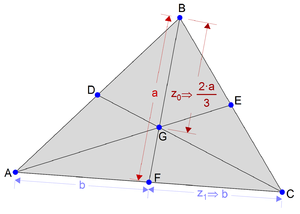 The location of the centroid of the triangle is defined with the Geometry Expressions calculation output Z0 in terms of constraint a. |
 This regular heptagon utilizes the semi-transparent feature of Geometry Expressions and can be used to prove that the circles are tangent to the diagonals and sides shown when they are centered on the intersections of other diagonals. |
Animations
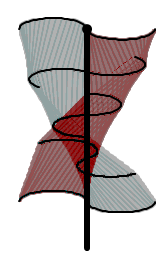 A geometric diagram of a twisted Savonius-style vertical axis wind turbine (VAWT) operating; created with Geometry Expressions. |
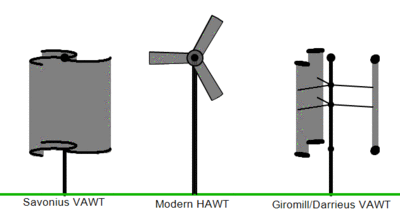 3 types of wind turbine in operation; made with Geometry Expressions. |
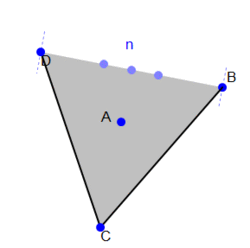 Animating the number of sides, n, of a regular polygon with Geometry Expressions. |
See also
- Interactive geometry software
External links
- Geometry Expressions Home Page
- Euclid's Muse, Geometry Expressions Math-Sharing Website
- Saltire Software Homepage
References
- ↑ http://geometryexpressions.com/explore.php?p=04-Newsletters&f=2012-08.htm
- ↑ http://library.wolfram.com/infocenter/TechNotes/6410/
- ↑ http://www.wolfram.com/products/applications/geometryexpressions/
- ↑ http://www.sigmadeltatau-phils.com/index.php/downloads/doc_details/10-geometry-expressions-30
- ↑ http://euclidsmuse.com
- ↑ http://geometryexpressions.com/
- ↑ http://geometryexpressions.com/pricing/Books.php
- ↑ http://geometryexpressions.com/
